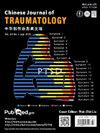经皮髂骶螺钉固定术的新方法:基于 CT 的术前规划与传统透视相结合,降低错位率并缩短手术时间。
IF 1.9
4区 医学
Q2 ORTHOPEDICS
引用次数: 0
摘要
目的:使用传统 C 型臂透视经皮髂骶螺钉(ISS)插入一直是骨盆后环固定术广泛采用的技术,尤其是在发展中地区。然而,这种方法存在技术难题,导致了较高的错位率。我们引入了一种无需额外设备或软件即可插入 ISS 的新方法,并提出该方法是否能降低错位率和缩短手术时间:这是一项回顾性队列研究。研究对象包括 2020 年 1 月至 2022 年 12 月期间接受经皮 ISS 固定术的所有患者。不包括接受开放复位或其他类型植入物治疗的患者。根据螺钉植入方法将患者分为两组:A 组采用传统的双平面调整方法,而 B 组则采用新引入的方法。在所有病例中,传统的 C 型臂透视是手术过程中唯一的引导方式。比较了各组的错位率、辐射量和手术时间。术后 CT 扫描采用 Smith 分级法评估螺钉的准确性。根据正态性检验结果,采用学生 t 检验或 Mann-Whitney U 检验来比较定量变量。定性变量的比较采用卡方检验:本研究共纳入 72 例在常规透视引导下经皮 ISS 治疗的骨盆后环中断患者。其中,A 组 32 例,B 组 40 例。在 B 组中,每枚螺钉的平均手术时间为 33 分钟,透视次数为 29 次,明显低于 A 组(44 分钟,P 结论:该研究采用的新方法证明了在传统透视引导下经皮 ISS 治疗骨盆后环中断的效果:与传统的双平面调整法相比,本研究中引入的新方法可减少错位率和手术时间。精确的术前 CT 规划与传统透视技术相结合,可使该方法成为一种广泛适用的经皮 ISS 固定技术。本文章由计算机程序翻译,如有差异,请以英文原文为准。
A new approach for percutaneous ilio-sacral screw fixation: CT-based pre-operative planning with conventional fluoroscopy to reduce malposition rate and operating time
Purpose
Percutaneous ilio-sacral screw (ISS) insertion using conventional C-arm fluoroscopy has been a widely employed technique for pelvic posterior ring fixation, particularly in developing regions. However, this approach presents technical challenges, leading to a high malposition rate. We introduced a new method for ISS insertion without additional equipment or software and suggested whether it could reduce the malposition rate and operating time.
Methods
This is a retrospective cohort study. The study included all patients who underwent percutaneous ISS fixation between January 2020 and December 2022. Patients treated with open reduction or other types of implants were excluded. The patients were divided into 2 groups based on the screw insertion method: Group A utilized the traditional dual-plane adjustment method, while Group B received the newly introduced method. In all cases, conventional C-arm fluoroscopy was the sole guidance during the surgical procedure. Malposition rate, radiation exposure, and operating time were compared between groups. Post-operative CT scans were used to assess screw accuracy using the Smith grading method. The Student's t-test or the Mann-Whitney U test was chosen for comparing the quantitative variables based on the normality test results. The Chi-squared test was utilized for comparing qualitative variables.
Results
A total of 72 patients with pelvic posterior ring disruption treated with percutaneous ISS under conventional fluoroscopy guidance were included in this study. Among them, 32 patients were in Group A and 40 patients were in Group B. In Group B, the average operation duration per screw was 33 min with 29 fluoroscopy applications, which was significantly lower than that in Group A (44 min, p < 0.001, 38 times, p < 0.001, respectively). Furthermore, the post-operative CT scan revealed that only 10.7% (6/56) of screws in Group B were inappropriately positioned according to the Smith criteria.
Conclusion
The novel method introduced in this study demonstrated a reduction in both malposition rates and operating time compared to the traditional dual-plane adjustment method. Precise pre-operative CT planning in conjunction with conventional fluoroscopy could establish this method as a widely applicable technique for percutaneous ISS fixation.
求助全文
通过发布文献求助,成功后即可免费获取论文全文。
去求助
来源期刊

Chinese Journal of Traumatology
ORTHOPEDICS-
CiteScore
3.80
自引率
4.80%
发文量
1707
审稿时长
28 weeks
期刊介绍:
Chinese Journal of Traumatology (CJT, ISSN 1008-1275) was launched in 1998 and is a peer-reviewed English journal authorized by Chinese Association of Trauma, Chinese Medical Association. It is multidisciplinary and designed to provide the most current and relevant information for both the clinical and basic research in the field of traumatic medicine. CJT primarily publishes expert forums, original papers, case reports and so on. Topics cover trauma system and management, surgical procedures, acute care, rehabilitation, post-traumatic complications, translational medicine, traffic medicine and other related areas. The journal especially emphasizes clinical application, technique, surgical video, guideline, recommendations for more effective surgical approaches.
 求助内容:
求助内容: 应助结果提醒方式:
应助结果提醒方式:


